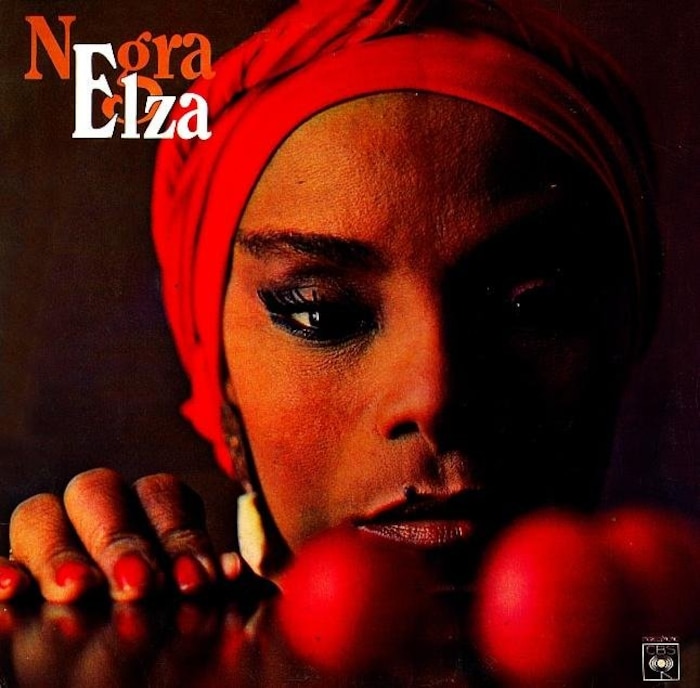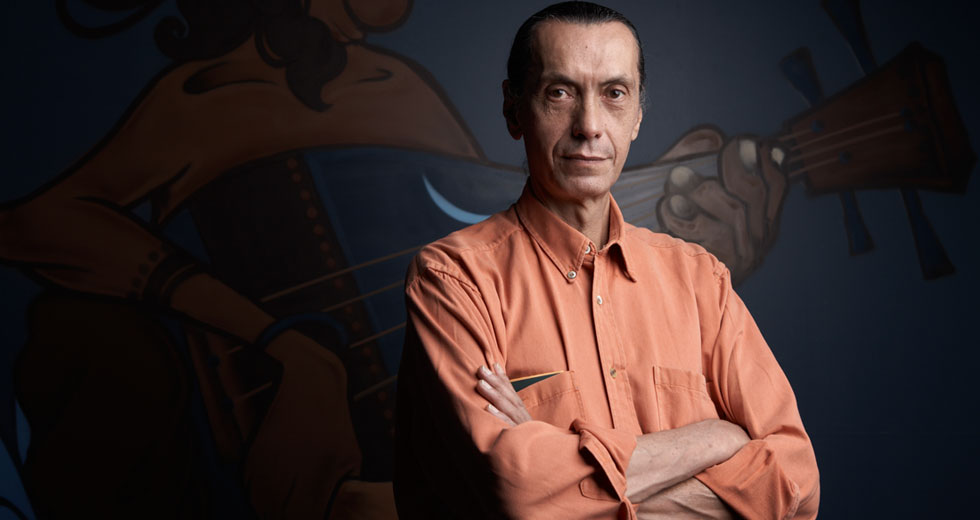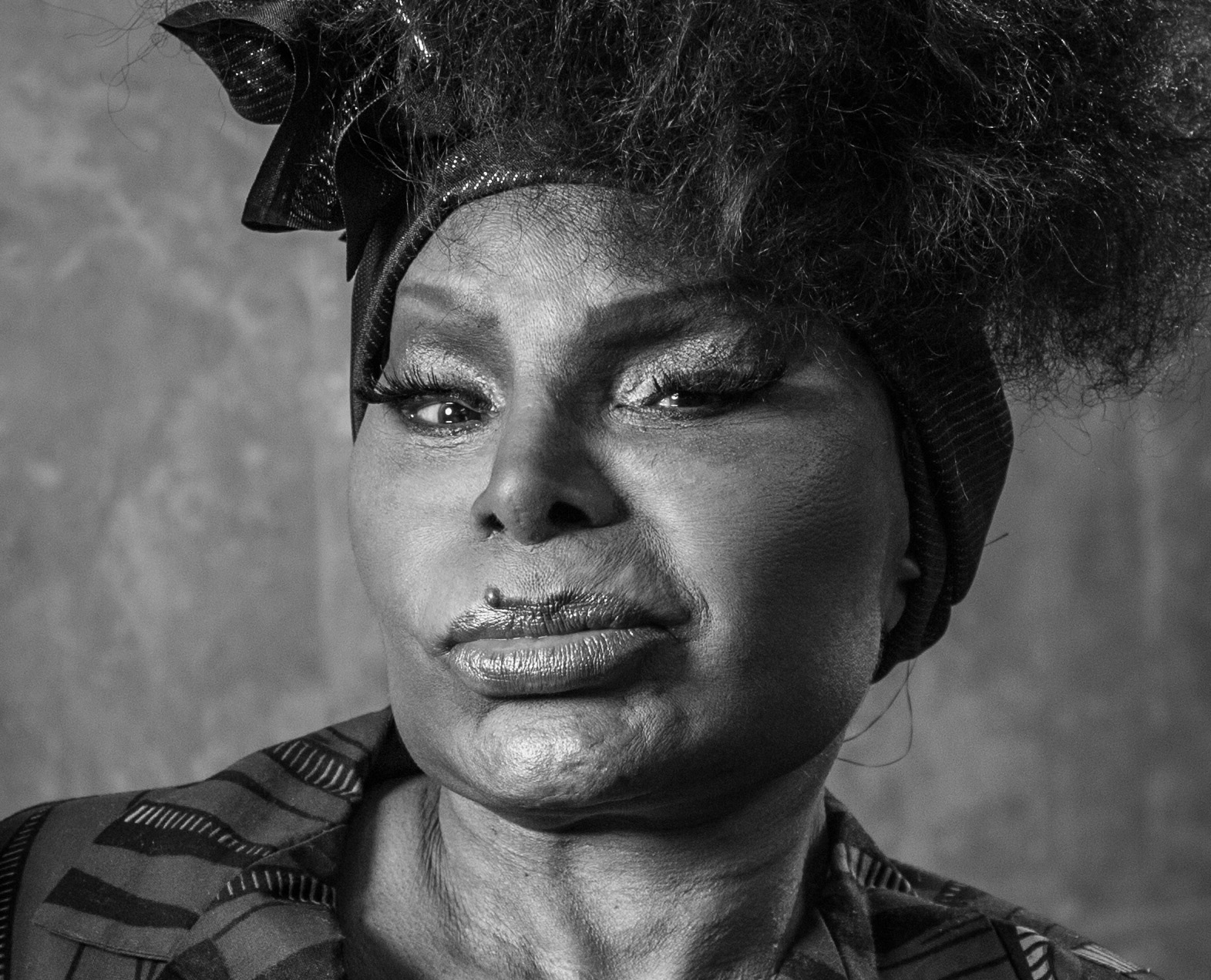The Unsinkable Elza Soares
Brazilian music experts Greg Caz and Béco Dranoff dissect the music and turbulent life of the octogenarian singer
New York DJ Greg Caz is a digger, collector and writer par excellence, obsessing over vinyl in general and Brazilian music in particular. His keen ear has been honed through a lifetime of listening to the likes of Elis Regina and Chico Buarque, and his fathoms-deep knowledge of Brazilian beats is highlighted in an ongoing residency at New York’s Nublu. Béco Dranoff is a similarly passionate and focused Brazilian music expert, a former programmer at São Paulo’s Jovem Pan II radio station and the founder of the Ziriguiboom label, which was founded in 1998 in collaboration with Belgium’s Crammed Discs and continues to release quality Brazilian music to this day. As part of the Red Bull Music Academy Festival New York 2017, the pair of experts got together to discuss some of the Brazilian music they’re most passionate about, with a particular focus on the indefatigable singer Elza Soares. In this condensed excerpt from their conversation, Caz and Dranoff dive into the unique qualities of Soares’ music, and the highs – and lows – that have made her a Brazilian icon.
The Woman at the End of the World
Béco Dranoff
Elza Soares is a giant in Brazilian music that is finally starting to get the worldwide recognition that she deserves. Everybody in Brazil loves her. Her career has spanned 50-something years. She has over 35 albums and I don’t know how many 78s and singles.
She is now, at 80-something years old, an iconic performer. She’s getting the mainstream recognition of world connoisseurs of music. She has managed since the ’50s to be on top of all the musical waves that arrived in Brazil: jazz, bossa, MPB (Música popular brasileira), samba, electronic. Her latest album A Mulher do Fim do Mundo/The Woman at the End of the World got a Latin Grammy award for Best Brazilian Album of the Year. She is still breaking ground and pushing the envelope on every level.
Greg Caz
It’s never been easy for Elza, right from the very beginning. It’s not like once she started making records and having hits that it got easier. She just traded one set of problems for a new set of problems, but she’s so strong and just unsinkable, that she’s been able to overcome it all. She’s getting awards and making very cutting-edge new music, and she continues to face difficulty. She’s got her physical setbacks, but nothing is stopping her, which makes her even more impressive.
She’s been influential outside of Brazil for a little while now, because as far back as the early ’90s and even the late ’80s, rare groove DJs in England and Europe always sought out her records, and among the international Brazilian record collecting scene, her records have always been prized. Her version of “Mas Que Nada” has always been a big dancefloor favorite. She’s had a lot of dancefloor favorites, but that one in particular has been on lots of compilations and DJ mixes. She’s got another song called “Deixa Isso Pra La” which is a cover of the Jair Rodrigues classic, which many Brazilians say is the first rap song because it’s kind of a spoken word flow over a funky beat. She did that record Elza Soares Baterista: Wilson Das Neves with the great drummer Wilson das Neves, basically rapping over his drum beat with occasional blasts from this big orchestra. That’s been another DJ favorite for many, many, many years.
She’s been very influential over a lot of different scenes for a long time, and I seem to recall a few years back she got a special citation or award from the government of Britain, like an MBE (Member of the British Empire). For many years she was on Odeon, which is a very well-known British label, so maybe it’s through that that, as she sold so many records for them. Odeon’s one of the great Brazilian [music] labels of all time. They go back to 1918 – the first recorded samba, “Pelo Telefone,” was an Odeon 78. So a lot of great people were on that label, including her.

Bossa Negra
Greg Caz
She debuted around 1960 or so, and at the time bossa nova had just really taken off in Brazil the year before with João Gilberto. It was a big thing. She wasn’t exactly a bossa nova artist – she was more towards samba – but they needed a marketing hook, and because she was this really poor black girl from the favela, some bright light at the label said, “Hey, let’s call you a ’Bossa Negra.’” So you have that tag on her first couple of records.
Elza’s Style
Béco Dranoff
Her delivery is very jazzy because she has that raspy voice. I think there’s a lot of Ella Fitzgerald influence. There’s jazz arrangements, jazz and samba, and this fusion is also bossa nova.
Greg Caz
That was standard in Brazil at the time, because all of the record labels and studios had their in-house orchestras, guys who were on loan from the municipal theater of Rio or something. So all of their records, no matter what the genre was, you had your same arrangers and musicians and orchestras and that was a standard. Even bossa nova itself came from guys listening to Stan Kenton and the cool jazz school.
Take a guy like Jorge Ben, the guy who’s credited with bringing a funky, bluesy, R&B thing to samba and bossa nova, but his early records are very imbued with samba jazz. If you look at the musicians on all these records it’s the same cats who play in jazz bars and who make their own jazz records. But during the daytime, they play on every kind of pop or samba or bossa nova record that there is to be made.
You could never really consider Elza a bossa artist just because of the vocal style. The main comparison that people used to make was to Louis Armstrong. That kind of rough voice in her scatting style was very close to Louis Armstrong, whereas bossa nova was more about the whisper.
Béco Dranoff
So subdued. Apartment music, they would call it. You had to keep it low so they wouldn’t bother the neighbors.
Greg Caz
And so with João Gilberto there is this very intimate guitar style, where it’s very intricate and there’s a lot going on, but on the surface it’s very quiet. Elza’s the radical opposite of that. She’s very big and bold and brassy.
The Ike and Tina of Brazil
Béco Dranoff
Growing up in Brazil in the ’60s, she was present. “Mas Que Nada” was a major hit when I was a kid, everybody knew it. The ’70s were the heyday of MPB, or Brazilian pop music, but then she was sort of too old school for the younger people. You know, she wasn’t tropicalia. She was lost a little in the shuffle in the ’70s and 80s. She was not in the media, not in the mainstream.
Greg Caz
The whole [momentum] of her career was invariably tied in with the fact that she was married to Garrincha, the second most famous and legendary soccer player in Brazil, after Pele. They had a stormy, tempestuous, difficult–
Béco Dranoff
Ike and Tina.
Greg Caz
Yes, a relationship like Ike and Tina, because he was a big legend when they won the first couple of World Cups, but he also was a heavy drinker. Further complicating matters is that he had a wife in his hometown and I forget how many kids, and he basically left them and hooked up with her. Brazil is thought about as this very liberal, sexy, laissez-faire kind of place, but it’s actually quite moralistic and conservative underneath all that, so she used to have a lot of problems when people found out that this guy left his family for her. She was called a homewrecker, people would throw stones at her house and she got a lot of bad publicity, had shows canceled. She kept recording through it all. She had the immense misfortune of having a song out, when the news first hit the media that she was with Garrincha, called “I Am the Other Woman.” The timing could not have been worse.
So that went on for a few years. At one point her work had dried up around the late ’60s, then she got some offers for work in Italy. So she moved there with Garrincha for a few years, but he was kind of on the downside of his career, too. She came back in the early ’70s and made this record Elza Pede Passagem, which has been one of her most prized records by DJs. There’s a lot of funky songs.
At the time in Brazil a lot of artists were combining samba with certain rock and black American music influences, you had Jorge Ben and Tim Maia coming up, so this record has a little of that influence going on. She even does a Jorge Ben song here, but she’s still also doing her samba. She wasn’t really making as many hits during this period, but she was making very lovely records.
Elza’s Comeback
Béco Dranoff
For Brazilians, she had a major come back with Caetano Veloso. He had an album called Velô and he invited Elza for backing vocals on a song called “Língua,” and basically that track reminded everybody that Elza’s still around, Elza still can sing. This was in the early ’80s. That track and that record were groundbreaking. Caetano was always groundbreaking. And I think that track rekindled interest in her, like, “Oh my God, she’s still around. She’s a survivor.” In the ’80s she started recording again and getting more attention, and then coming back to the DJs, the ’90s were amazing. Thank God the English DJs, the acid jazz thing, brought all this back to life.
Greg Caz
Yeah, the acid jazz scene did work wonders for not just Brazilian music itself, but when it came to Brazilian music the DJs went beyond the obvious records that people generally knew. DJs like Joe Davis started going to Brazil and buying all these other records that were mostly just known inside of Brazil. After bossa nova, you had your front rank of MPB artists: Caetano Veloso, Gilberto Gil, Jorge Ben, Elis Regina, Milton Nascimento. Those were the records that got exported a lot and that people talked about a lot, but then you had other records that were more known sort of within Brazil’s border.
Béco Dranoff
Even in Brazil they were hard to find. You couldn’t find a real Jorge Ben record. You couldn’t find a good copy of anything. In the early ’90s Brazilians felt the feedback from Europe. They said, “If the Europeans love it, why aren’t we listening to this?” And that’s the magic of all this, how Brazilian music was devalued and then re-evaluated because of what happened in Europe and Japan. The movement in Europe made the labels repress them.
Greg Caz
When Stereolab went to Brazil and they said “We’re huge Marcos Valle fans,” and Marcos Valle heard this, he invited them to come visit him. Tim Gane from Stereolab was like, “This guy, he’s my guy. I don’t even think that I can handle this.” And kids in Brazil are like, “Really? That old guy?”
Béco Dranoff
It revived careers. I think the magic, the trick is that these artists [finally] became cool for Brazilians [of] this generation. Growing up in Brazil, we heard a lot of international music. This generation of Brazilian kids listens to Brazilian music. There are massive parties of Brazilian music now, and there’s a whole movement that started in the ’90s with the “manguebeat” phenomenon. There was a gentleman called Chico Science and there was a whole Recife thing, and their manifesto was “Caranguejos com Cérebro” (which means “Crabs with Brains”), because Recifie has the river system so it’s a city full of crabs, with the internet, with satellites, with global communication. They saw it all coming, and manguebeat made Brazilian music cool for young Brazilians. Now everything is so available and the kids are connected and smart and looking and searching for this. We have national stars from Brazil that are global stars now, and we have a lady like Elza who’s still connecting to young people.
Her album The Woman at the End of the World from 2015 is a very forward-thinking record. [One has] to be open-minded enough to [hear it]. It has crazy language, crazy beats, crazy mixes. It’s pushing the envelope until the end of the world, and she [sings], “I’m gonna sing until the end. I’m gonna sing until the end.” It’s fascinating because she really will be singing until the end.

